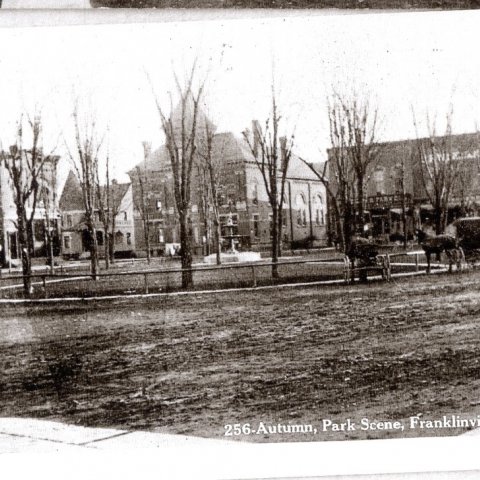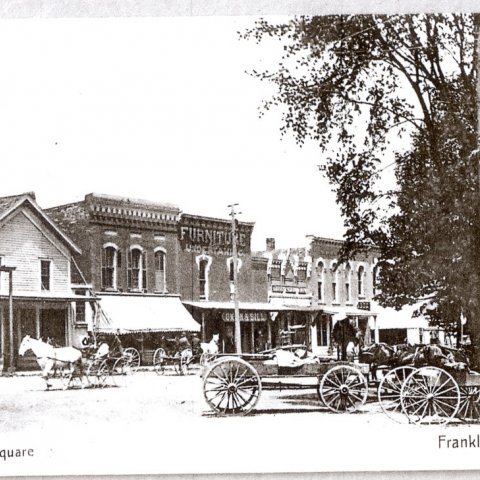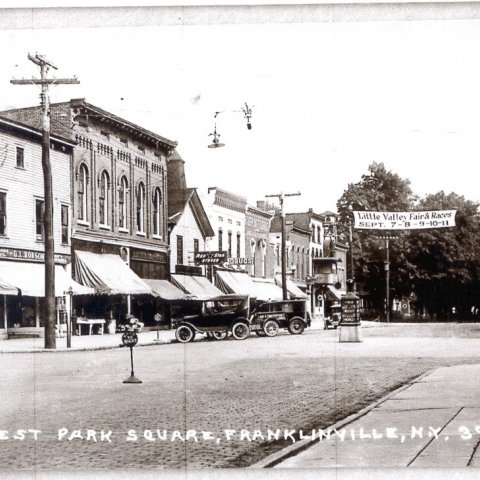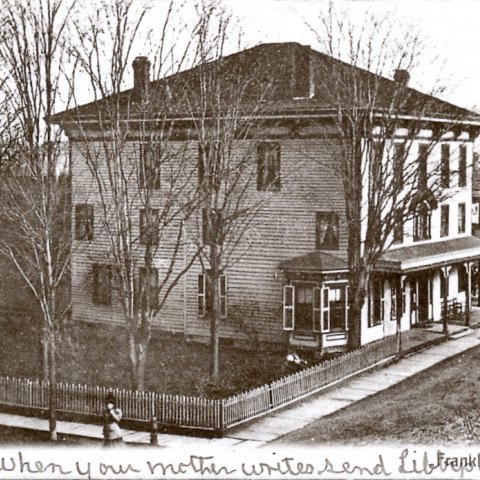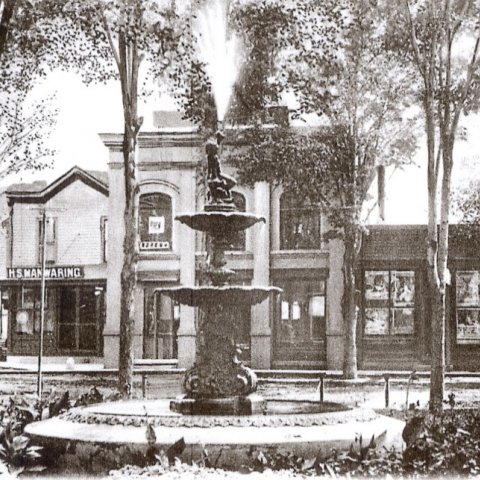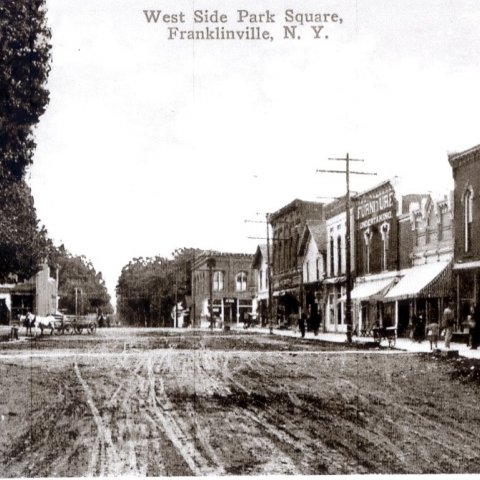There has been some confusion as to the formation of the Town of Franklinville
because of statements which appeared in the State Gazetteer of 1861 and the
County Gazetteer of 1874 which read "Franklinville was formed from Olean, June
16, 1812, as "Hebe". Its name was changed to Ischua, April 17, 1816. The
following sequence is correct: Cattaraugus County was originally set off from
Genesee County in 1808 and called Olean. In 1812, Olean was divided which resulted
in the formation of Olean and Ischua. In 1814, Olean and Ischua were
divided again, which resulted in the County being 3 towns; Olean, Ischua and
Perry. In 1820, Ischua was reformed into the Towns of Ischua, Freedom, Yorkshire,
and Ellicottville. In 1821, a portion of the Town of Ischua was excised
forming the Town of Farmersville. In 1824, the remaining Town of Ischua was
renamed Town of Franklinville. In 1829, the Town of Franklinville was split
forming the Towns of Franklinville and Lyndon, leaving the Town of Franklinville
with its present boundaries.
The fertile soil and valuable timber rapidly brought settlers to the
Franklinville area. In 1806 the first pioneer settler arrived in Franklinville.
In 1816, a severe winter with bitter, cold temperatures and several feet of
snow caused many settlers to leave the Town or move west or to the hills to get away
from the frost. This resulted in the County being nicknamed "Cold Cattaraugus".
In 1817, the Holland Land Company was giving "articles". In order to receive an
"article" one would pay enough down to cover the cost of the paperwork and would
obtain possession to a parcel of land. This attracted many settlers to the
Franklinville area. Even settlers who had owned land in other counties or other
sections of this county, sold their land (for whatever they could get) and acquired
land in the Franklinville area. It is recorded that one individual bought
"50 acres in Sugartown for a dog...a hound at that."
The Town was afforded excellent transportation/communication with the presence of
the Western New York & Pennsylvania (1872) and the Buffalo, Rochester, & Pitts burgh.
From 1808 to 1812, Franklinville was in the Town of Olean and was the
population center of the County. From 1812 to 1824, Franklinville was in the
Town of Ischua during which time it was Ischua's business center.
The soil of the Town was remarkably well adapted to dairying with agricultural
efforts directed toward cheese and butter manufacturing.
The Village of Franklinville (first known as Ischua Flats and then McCluer
Settlement (1806)) received its name in honor of Benjamin Franklin and was incorporated
in 1874. At one point in history, the Village was very nearly the center
of several surrounding tribes of indians - the Alleganies, Cattaraugus,
Tonawandas, Squakie Hill, Gardow, and Caneadeas.
The Village water system was completed in 1890. The Franklinville Electric Light
Company (1893) was for purpose of overseeing lamp lighting within the Village.
The Bank of Franklinville opened its doors in 1873. The Franklinville Canning
Company commenced operations in 1882. Ten Broeck Free Academy opened in 1867.
The first fire company was the Eagle Engine Co. formed in 1876. A large building
was donated by Henry Morgan (1885) to be used for a town hall. That building
named in his honor, Morgan Hall, stands today on the Village Square.
The Village of Cadiz saw its first settlers in 1808, followed by the establishment
of a carding mill, a store (1825), a saw mill (1818), a tavern (1826), a
blacksmith shop, post office (1851) a church, a cheese box factory, barrel factory
(1870), a broom factory, school house, a cheese factory (Cadiz Union) a
clothes pin factory, a grist mill (1816) and a copper shop.
The hamlet of Fitch, now non-existant, was a post office near the southeast
corner of Franklinville, on the Western New York & Pennsylvania Railroad. It
contained 2 stores, a saw mill (1882), a feed mill (1889), and a cheese factory.
In the 1890's, Franklinville contained 3 dry good stores (1st - 1821), clothing
store, 6 groceries, 2 hotels (i.e . Globe), 5 lawyers, 5 physicians (1st - 1817),
2 weekly newspapers (1st 1865 - Weekly Pioneer), an academy, a grade school, 2
marble and granite shops, 2 hardware store, 2 jewelry stores, 2 drug stores (Ely
& Ferris), 2 wagon shops, 4 blacksmith shops (1st - 1824), 2 harness shops, 3
shoe shops, 2 meat markets, a bakery, 3 millinery stores, 3 dressmakers, 4 tailors,
2 feed stores, a shore store, a coal office, 2 livery stables, 2 insurance
offices, 2 undertakers (i .e. Dean & Spring), a furniture establishment, 2 photographers,
2 taverns, 2 barber shops, a tannery (1819), a telephone/telegraph/
express office, several carpenter shops, several saw mills, 6 cheese factories
including Rock Stream, E. H. Farrington, and Laidlaw).
Source: Cattaraugus County Book 1808-1995/96 and Ischua Valley Historical Society


